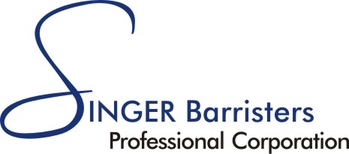Despite how common it now is to see orders for the production of material from social media sites — with the content to be used as evidence — plaintiffs continue to let their guards down online, putting their credibility in danger, says Toronto personal injury lawyerDarryl Singer.
One recent case, Tambosso v. Holmes, 2015 BCSC 359 (CanLII), saw a woman’s claim for hundreds of thousands of dollars in damages largely rejected by a judge who found the contents of the woman’s Facebook page to be “completely inconsistent” with her testimony.
The woman was suing for damages as a result of two car accidents — one in 2008, the other in 2010. The case details claims of several injuries allegedly suffered by the woman, including psychological ailments such as “post-traumatic stress disorder, depression and mild traumatic brain injury,” reads the decision.
Evidence put forward by the defence included more than 100 pages from the woman’s Facebook account, showing her in numerous social settings with friends.
“I conclude that based on this Facebook evidence, in particular the photos of continued attendance at social events and posts from friends, that the plaintiff had a very active social life following the 2008 and 2010 accidents. The social life portrayed by her Facebook profile is consistent with the social life of someone who went through three engagements, the birth of a child, and a marriage. It is completely inconsistent with the evidence the plaintiff gave at trial and to the experts that she was a ‘homebody’ whose ‘life sucked’ and ‘only had friends on the internet,’” Justice Robert W. Jenkins writes inTambosso.
Singer, who was not involved in the case but commented on the topic generally, says there was a time when an individual’s online persona didn’t play a role in the courtroom — but that time is over.
“It’s standard practice now when clients go to discovery for them to be asked whether they have a Facebook account, a LinkedIn account, an Instagram account, a Twitter account. It’s standard for them to be asked not to delete anything from that day forward, and they may or may not be asked to produce copies of certain photos,” says Singer.
That said, blanket access to a Facebook page is not the norm, as discovery is not meant to be a “fishing expedition,” adds Singer.
“What I tell my clients from the day they come into the office and retain me is you need to be very, very careful about what you post on social media if it’s inconsistent with what you’re going to say under oath,” he says. “If a client says they used to go out dancing every week but can’t do so since their accident, but Facebook photos show they’ve been out every second weekend at clubs with friends, that’s going to harm their credibility and destroy the case.”
In fact, Singer says it’s best if plaintiffs refrain from posting altogether.
“It used to be that insurance companies would hire private investigators to determine that things you say you can’t do you’re actually doing — and they still do that — but now sometimes all they have to do is look at social media accounts,” he says.
Privacy settings do not always mean a post will remain private, adds Singer, who says there is “always a way” the page can be accessed.
The digital age has not necessarily changed Singer’s tactics in handling such cases, but social media “adds an extra layer” of information to warn clients about.
“We tell them they may be followed by a private investigator, and now we tell them about the risks of social media. I don’t think it’s any different — it’s just a digitized version of the analogue form, which was a private investigator following you in a car,” he says. “People can be incredibly careless. They think they’re only posting it for friends. I’m constantly amazed at how many people let their guards down.”
